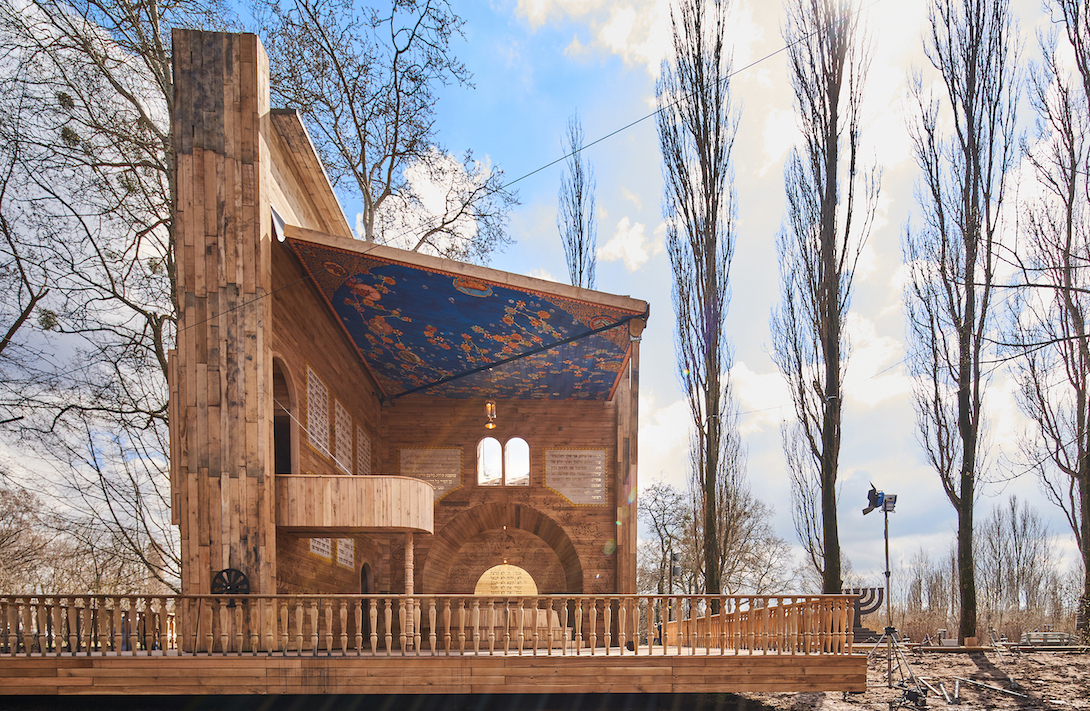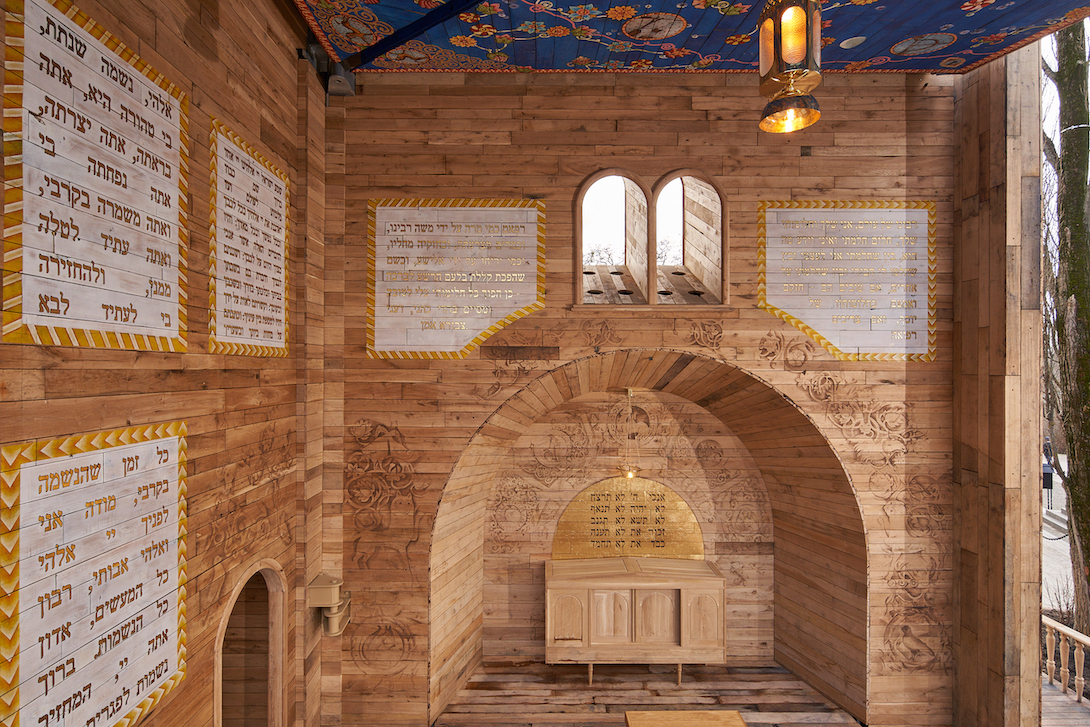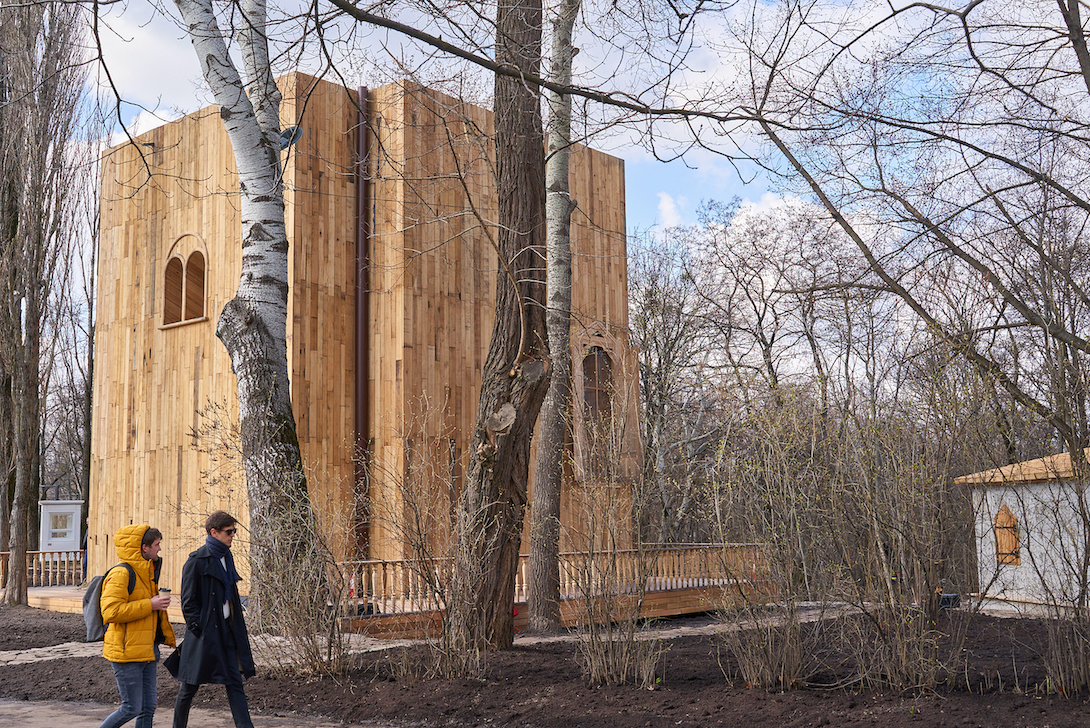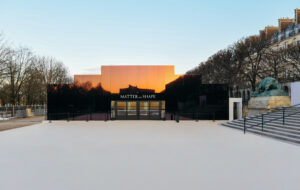Forming part of The Babyn Yar Holocaust Memorial Center, the wooden synagogue in western Kyiv opens like a book

Words by Francesca Perry
Babyn Yar, a wooded area in the west of Ukraine’s capital Kyiv, is the site of one of the worst massacres of the Nazi regime, which took place in 1941. As part of a long-term process to build The Babyn Yar Holocaust Memorial Center (BYHMC) on the site, a ‘symbolic synagogue’ has been designed by Manuel Herz Architects to commemorate the 80th anniversary of the Babyn Yar tragedy.
The Babyn Yar Symbolic Synagogue takes its design inspiration from pop-up books and from the historic wooden synagogues of Ukraine. When closed, the building is a flat structure that is manually opened, and then unfolds into a synagogue space.
‘If we conceptualise the synagogue as a building typology in its purest essence, we can consider it as a book,’ says Herz, whose practice is based in Basel, Switzerland, and Cologne, Germany. ‘During the religious service, a congregation comes together, to collectively read a book… It is this notion that informs the design of the new Babyn Yar Synagogue.’
Opening the synagogue is a collective ritual, performed by the congregation. The interior space then contains the Bimah (reading platform for the Torah) in the centre, with benches and balcony.

‘In a sense, the pop-up book can act as a metaphor for the Synagogue,’ says Herz. ‘No-one can resist the temptation of opening up these books of wonders and explore them. This quality of a “cabinet of wonder” and a new universe that unfolds, is what I wanted to create in the location of Babyn Yar. It’s not a static building that it imposes itself on the site in only one manifestation, but the fact that it shrinks back to a slender vertical volume makes it have a tender approach to the ground.’
The structure is made of mature oak wood, sourced from across Ukraine, and sits on a wooden platform that hovers slightly above the ground. The walls are decorated with Jewish prayers and blessings, and the colourful ceiling is painted with symbols and iconography referencing the interior of synagogues in Ukraine from the 17th and 18th century that have since been destroyed. Together, the painted symbols recreate the star constellation that was visible over Kyiv on the night of the 1941 massacre.
The project – conceived in October 2020 – is the first structure to be completed as part of the Babyn Yar memorial complex in western Kyiv, which when completed will stretch over an area of 150 ha.

A dozen buildings will eventually be constructed as part of the complex, including: a museum to commemorate the Babyn Yar massacre; a museum to commemorate the Holocaust of Ukrainian and Eastern European Jewry as a whole; a structure depicting the names of the victims; a religious centre; an educational and scientific research centre; a multi-media centre; a learning and recreational space for children; an information and conference centre. The complex will be one of the world’s largest Holocaust memorial centres.
‘Babyn Yar is a place of memory, history is literally absorbed by the ground here,’ says Ilya Khrzhanovsky, BYHMC’s artistic director. ‘We need to create a space that makes the story of Babyn Yar close, relevant to anyone, regardless of nationality, gender, age or religion.’
Photography courtesy of Babyn Yar Holocaust Memorial — Manuel Herz Architects
















